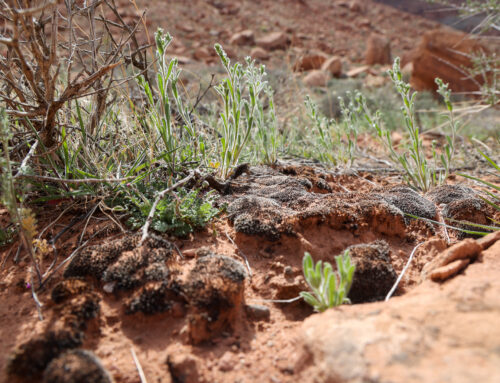Heyo, lots of flowers poppin out there! Today I am going to talk about one that can easily catch your eye. Indian Paintbrush or Castilleja chromosa. This group of paintbrushes was spotted up by the Navajo rocks area on 313. I am not sure they got the memo on social distancing
There are a few types of Paintbrush that grow around the Moab area: Wyoming Paintbrush, and Eastwood’s Paintbrush, but the most common to see is the Common Paintbrush or Indian Paintbrush. The Wyoming is taller and more spindly looking and grows in wet areas. The Eastwood’s is harder to differentiate, but it is more compact and only grows in sandy or sandstone substrates.
Indian paintbrush is an attractive member of the parasitic Broomrape family (Orobancaceae). Plants in this family can be either holoparasitic or hemiparasitic (fully or partly parasitic). The Paintbrush is hemiparasitic, meaning it takes nutrients from the roots of other plants, but it is also capable of photosynthesis. Plants that are holoparasitic rely completely on getting nutrients from other plants, lack chlorophyll, and cannot perform photosynthesis.
Indian Paintbrush does rely on pollinators for reproduction. Insects can play a role in this, especially bees, but red is hard for insects to see. So the paintbrush is more adapted to be pollinated by hummingbirds. It is biennial, meaning it lives for 2 years. Usually this means the first year the plant becomes established, and the second year it flowers and eventually dies.
It got the name “Paintbrush” by its appearance. The flower looks like a paintbrush dipped in a vibrant color, usually red. Paintbrushes do come in many colors including: orange, yellow, purple, and even white.









Leave A Comment